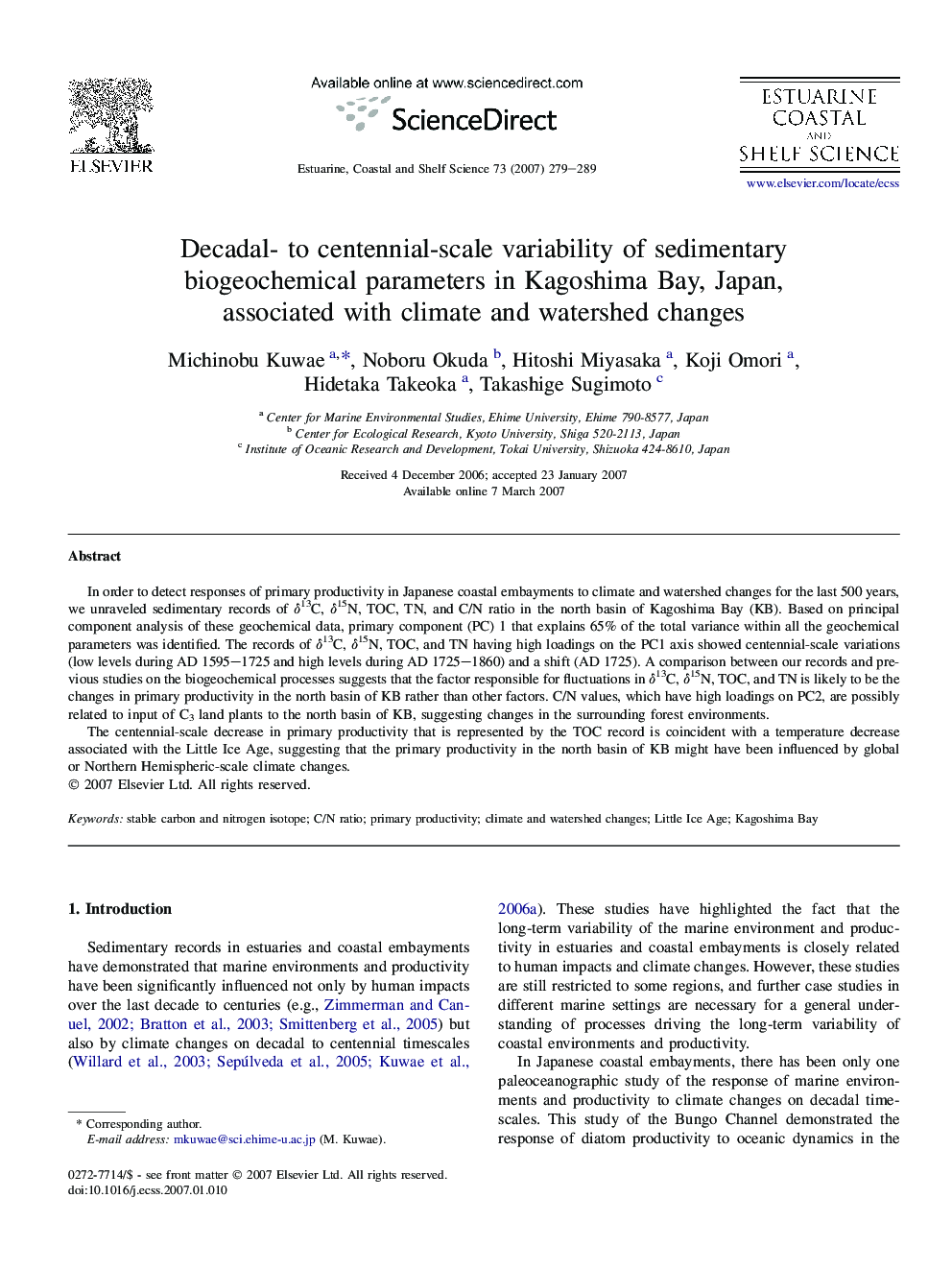| کد مقاله | کد نشریه | سال انتشار | مقاله انگلیسی | نسخه تمام متن |
|---|---|---|---|---|
| 4541980 | 1626704 | 2007 | 11 صفحه PDF | دانلود رایگان |

In order to detect responses of primary productivity in Japanese coastal embayments to climate and watershed changes for the last 500 years, we unraveled sedimentary records of δ13C, δ15N, TOC, TN, and C/N ratio in the north basin of Kagoshima Bay (KB). Based on principal component analysis of these geochemical data, primary component (PC) 1 that explains 65% of the total variance within all the geochemical parameters was identified. The records of δ13C, δ15N, TOC, and TN having high loadings on the PC1 axis showed centennial-scale variations (low levels during AD 1595–1725 and high levels during AD 1725–1860) and a shift (AD 1725). A comparison between our records and previous studies on the biogeochemical processes suggests that the factor responsible for fluctuations in δ13C, δ15N, TOC, and TN is likely to be the changes in primary productivity in the north basin of KB rather than other factors. C/N values, which have high loadings on PC2, are possibly related to input of C3 land plants to the north basin of KB, suggesting changes in the surrounding forest environments.The centennial-scale decrease in primary productivity that is represented by the TOC record is coincident with a temperature decrease associated with the Little Ice Age, suggesting that the primary productivity in the north basin of KB might have been influenced by global or Northern Hemispheric-scale climate changes.
Journal: Estuarine, Coastal and Shelf Science - Volume 73, Issues 1–2, June 2007, Pages 279–289